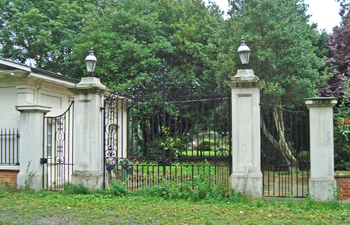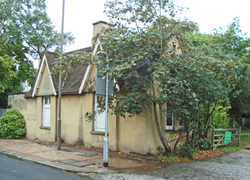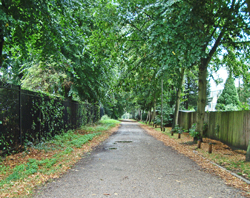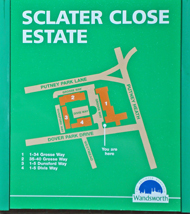Specialist
Following the acquisition of Roehampton House for use as a hospital for limbless servicemen, the American banker Mr John Pierpoint Morgan, Jr (1867-1943), offered Dover House, the residence of his late father, J.P. Morgan (1837-1913) for use as a hospital for limbless officers.
The property stood in 140 acres of ground, almost adjoining Roehampton House. Queen Mary gave her permission for them both to be named Queen Mary's Convalescent Auxiliary Hospitals. They were both affiliated to the King George Hospital in Stamford Street and, together, they could accommodate some 300 officers and men.
Queen Mary's Convalescent Auxiliary Hospital, Dover House, opened in July 1915 with 20 beds.
By the beginning of November 1915 the Hospitals' Register had 2,400 patients, with another 1,259 ready or almost ready to be admitted. Temporary wards were built at Roehampton House to meet this difficult situation.
In February 1916 an Appeal was launched to raise funds for the two Hospitals, so that patients could be fitted properly with their artificial limbs. Previously, patients had been discharged from military hospitals and sent home, to where their prosthetic limbs would be posted to them. Since these nearly always needed adjustment, the appliances could not be used until the patient had been seen by a limb-maker. This usually necessitated a long journey so, for want of instruction in their use, the artificial limb was discarded as worthless and the patient resorted to using a crutch or a peg leg.
The Hospital closed in 1919, but the artificial limb-fitting service continued at Roehampton House, under the auspices of the Ministry of Pensions.
Present status (August 2010)
After the closure of the Hospital, Dover House and its grounds, together with Putney Park House, were purchased by the LCC in 1919.
The House was demolished in 1921 to provide land for a new housing estate - the Dover House Road Estate. It was one of the first cottage estates to be built by the LCC after the war.

The 18th century North Lodge of Dover House (above) and the entrance gates (below) along Putney Park Lane have survived.


The South Lodge (above) is at the entrance to Putney Park Lane off Putney Heath (below).


Along Putney Park Lane.

The Sclater Close Estate was built in the grounds of Dover House.
(Author unstated) 1917 List of the various hospitals treating military cases in the United Kingdom. London, H.M.S.O.
(Author unstated) 1918 Artificial limbs for soldiers. List of special hospitals. The Times, 16th September.
(Author unstated) 1919 Artificial limbs for officers. Grants and "fitting" hospitals. The Times, 10th October.
Phillips G 1990 Best Foot Forward: Chas A. Blanchard & Sons Ltd. - Artificial Limb Specialists, 1890-1990. Cambridge, Granta.
http://1914-1918.invisionzone.com
http://archive.org
http://paperspast.natlib.govt.nz
http://query.nytimes.com
http://trove.nla.gov.au
www.iwn.org.uk
www.kentvad.org
www.scarletfinders.co.uk
www.sloanegrammar.co.uk
Return to home page